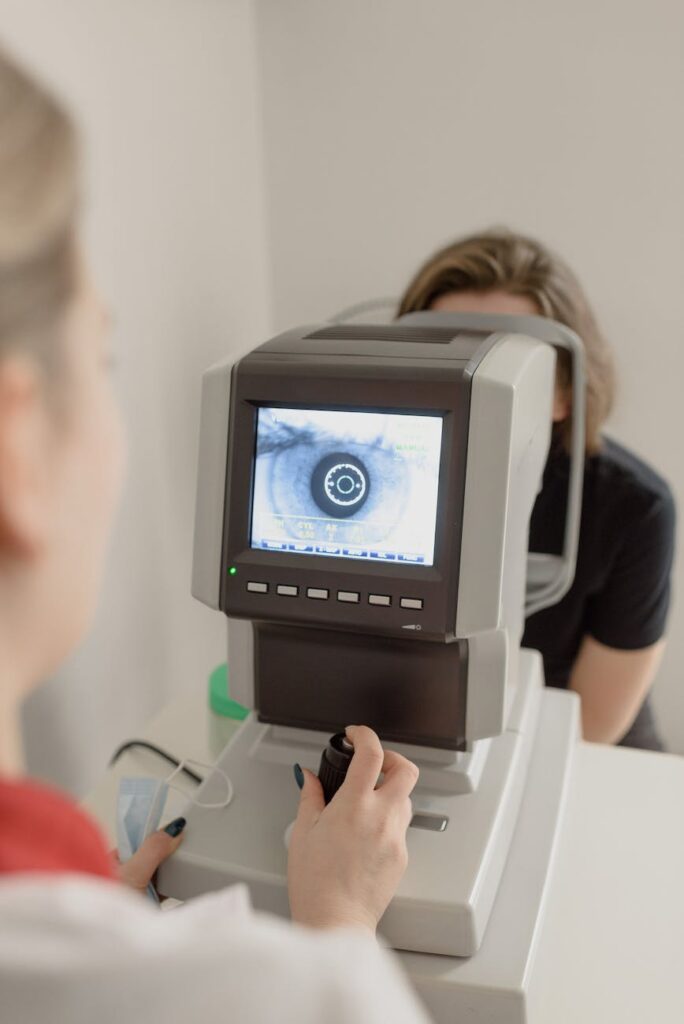
Introduction:
The field of ophthalmology is witnessing remarkable advancements in technology, revolutionizing the way we diagnose, treat, and manage eye conditions. From cutting-edge imaging techniques to innovative devices, breakthrough technologies are shaping the future of eye care. In this article, Dr David Stager will explore four key technologies that are transforming ophthalmology and paving the way for improved vision and eye health.
Optical Coherence Tomography (OCT): Revealing the Invisible
Optical Coherence Tomography (OCT) has revolutionized the diagnosis and management of various eye diseases. Using light waves, OCT creates high-resolution, cross-sectional images of the retina and other ocular structures. This non-invasive imaging technique enables early detection and monitoring of conditions such as age-related macular degeneration, glaucoma, and diabetic retinopathy. With its ability to visualize intricate details of the eye, OCT has become an indispensable tool for ophthalmologists, allowing for more accurate diagnosis and timely intervention.
Artificial Intelligence (AI) and Machine Learning: Empowering Diagnosis and Decision-Making
Artificial Intelligence (AI) and machine learning algorithms are transforming ophthalmology by assisting in the interpretation of medical images and improving clinical decision-making. AI-powered systems can analyze vast amounts of data from retinal images, identifying patterns and detecting subtle abnormalities with remarkable accuracy. This technology enables earlier diagnosis and personalized treatment plans for conditions like diabetic retinopathy, retinal diseases, and glaucoma. With continuous learning, AI algorithms have the potential to enhance patient outcomes and streamline the workflow in eye care settings.
Smart Implants: Merging Technology with the Eye
Smart implants are emerging as groundbreaking solutions for individuals with vision impairments. These devices combine advanced electronics, sensors, and microchips to interface with the eye and restore vision. Retinal implants, for example, are designed to stimulate the remaining healthy cells of the retina, bypassing damaged photoreceptor cells and transmitting visual information to the brain. Smart contact lenses embedded with sensors offer real-time monitoring of intraocular pressure and glucose levels, aiding in the management of conditions like glaucoma and diabetes. These futuristic technologies hold immense promise for individuals with visual impairments, providing them with the opportunity to regain functional vision.
Augmented Reality (AR) and Virtual Reality (VR): Transforming Eye Care Education and Training
Augmented Reality (AR) and Virtual Reality (VR) technologies are revolutionizing eye care education and training. These immersive technologies offer realistic simulations of various eye conditions and surgical procedures, allowing students, residents, and ophthalmologists to practice and refine their skills in a controlled virtual environment. AR and VR applications also facilitate patient education, enabling individuals to visualize their conditions and understand treatment options. By enhancing learning experiences and promoting skill development, these technologies are shaping the future of eye care professionals.
Conclusion:
Breakthrough technologies are propelling ophthalmology into a new era of precision, early diagnosis, and enhanced patient care. Optical Coherence Tomography (OCT) provides unprecedented visualization of ocular structures, while Artificial Intelligence (AI) and machine learning empower ophthalmologists with accurate diagnoses and personalized treatment plans. Smart implants and devices merge technology with the eye, offering hope for individuals with vision impairments. Additionally, Augmented Reality (AR) and Virtual Reality (VR) are transforming eye care education and training, enabling immersive and realistic simulations. As these technologies continue to evolve, they hold immense potential to improve the vision and eye health of individuals worldwide, shaping a future where eye care is more precise, accessible, and effective.